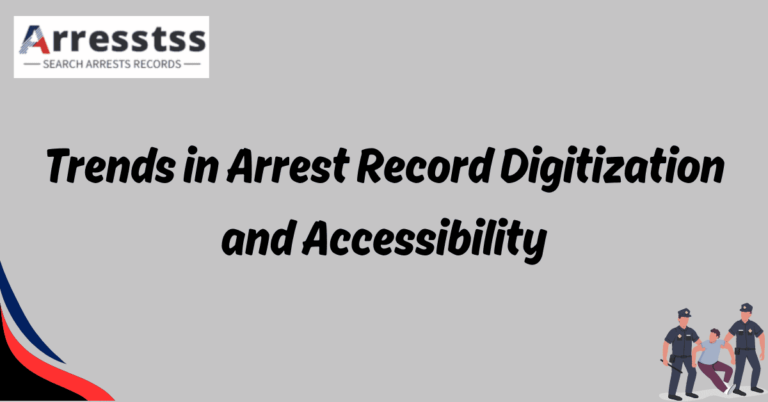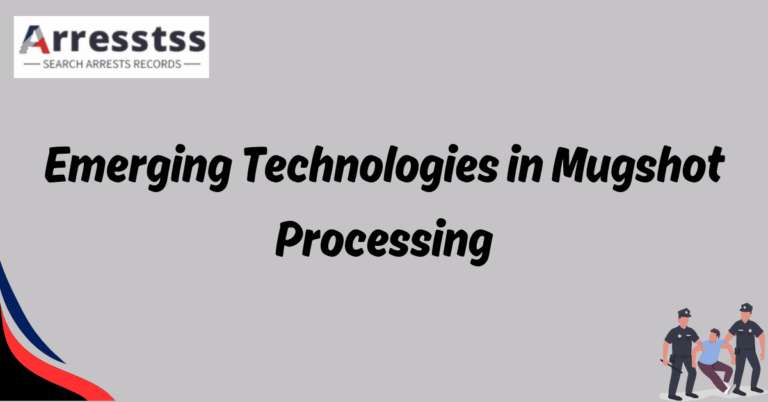The Future of Arrest Records: Innovations and Predictions
Future of Arrest Records: A Technological Revolution
Arrest records have long been a vital component of our criminal justice system, providing essential information about individuals who have been detained or taken into custody. However, as technology continues to advance at an unprecedented pace, the future of arrest records is poised for a significant transformation. Innovations in data management, artificial intelligence, and predictive analytics are reshaping the way we understand and utilize arrest records.
The Power of Big Data and Machine Learning
One of the most promising advancements is the integration of big data and machine learning algorithms. This powerful combination allows for more efficient and accurate processing of vast amounts of arrest record information. By analyzing patterns and trends within these records, law enforcement agencies can identify potential risks, predict recidivism rates, and allocate resources more effectively.
Enhancing Law Enforcement Strategies
With the integration of big data and machine learning, law enforcement agencies can develop more effective strategies to combat crime. By analyzing arrest records on a larger scale, patterns and connections can be identified that were previously overlooked. This allows law enforcement to allocate resources strategically, focusing on high-risk areas and individuals.
Improving Rehabilitation Programs
Arrest records can also be utilized to improve rehabilitation programs for offenders. By analyzing arrest records and identifying factors that contribute to reoffending, rehabilitation programs can be tailored to address individual needs. This targeted approach increases the chances of successful rehabilitation and reduces the likelihood of repeat offenses.
Predictive Analytics and Risk Assessment
Another exciting development in the future of arrest records is the use of predictive analytics and risk assessment. By analyzing historical arrest data, machine learning algorithms can identify patterns and indicators that predict the likelihood of an individual committing future offenses. This allows law enforcement to intervene before a crime occurs, preventing harm to potential victims.
Ensuring Data Security and Privacy
As technology advances, it is crucial to address concerns regarding data security and privacy. Law enforcement agencies must prioritize the protection of arrest record information and ensure that it is handled responsibly. Safeguards, such as strict access controls and encryption, should be implemented to prevent unauthorized access and protect the privacy rights of individuals.
A Collaborative Approach
The future of arrest records relies on collaboration between law enforcement agencies, technology experts, and policymakers. By working together, we can harness the power of technology to improve the criminal justice system, enhance public safety, and ensure the fair and equitable treatment of all individuals.
FAQ’s
Innovations in data management have the potential to revolutionize the way we handle arrest records. With the integration of big data and machine learning algorithms, law enforcement agencies can process and analyze vast amounts of arrest record information more efficiently and accurately. This allows them to identify patterns and trends within the data, leading to better insights and decision-making.
Artificial intelligence (AI) will play a crucial role in the future of arrest records. AI algorithms can analyze arrest records and extract valuable information, such as identifying high-risk individuals or predicting recidivism rates. By leveraging AI, law enforcement agencies can allocate resources more effectively and make data-driven decisions to enhance public safety.
How can predictive analytics enhance arrest record usage?
Predictive analytics can significantly enhance the utilization of arrest records. By analyzing historical arrest data and patterns, predictive analytics algorithms can forecast future criminal activities, identify potential risks, and prioritize law enforcement efforts accordingly. This proactive approach allows for preventive measures and early intervention, ultimately leading to a more efficient and effective criminal justice system.
While advancements in arrest record technology bring numerous benefits, they also raise concerns about privacy rights. It is crucial to strike a balance between utilizing technology for public safety and protecting individual privacy. Strict regulations and protocols must be in place to ensure that personal information obtained from arrest records is handled securely and used responsibly.
The future of arrest records will have a profound impact on law enforcement agencies. With improved data management, artificial intelligence, and predictive analytics, law enforcement agencies will have access to more accurate and comprehensive information. This will enable them to make data-driven decisions, allocate resources efficiently, and enhance overall operational effectiveness.







